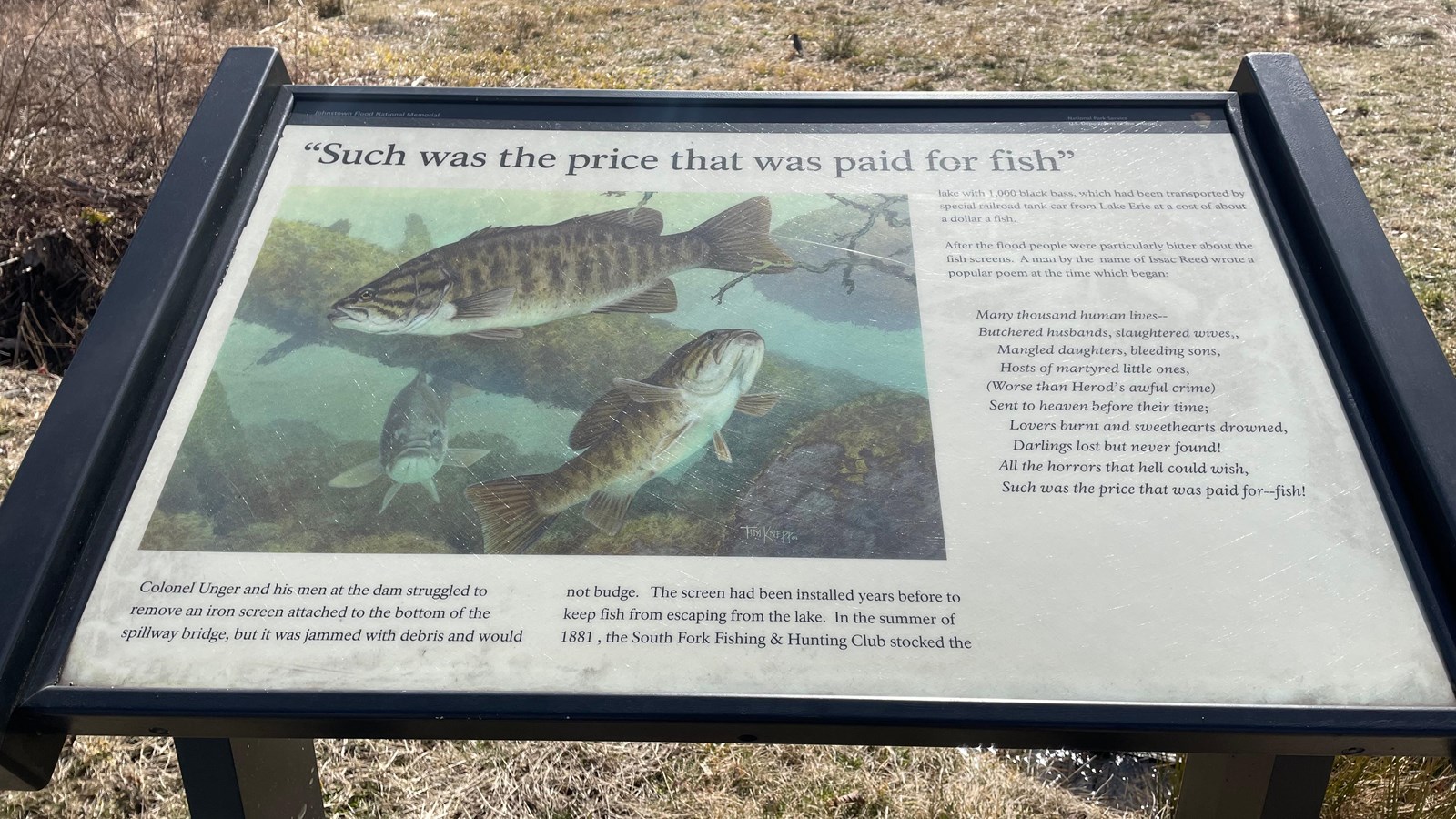Last updated: March 2, 2024
Place
"Such was the price that was paid for fish" Wayside

NPS
Quick Facts
Amenities
1 listed
Historical/Interpretive Information/Exhibits
Description of Wayside: The low-profile wayside is 36 x 24 inches and is surrounded by black metal. It has a black rectangular base with two rectangular pillars supporting the panel. The wayside along the Walk Through the Ruins trail.
Wayside Layout: At the top of the wayside is a thin black banner with white text. To the left is "Johnstown Flood National Memorial." To the right is "National Park Service, U.S. Department of the Interior." Next to the text is the National Park Service arrowhead. The title of the wayside is below the black banner in large black font. The panel has a cream-colored background. There are one two small columns of text and one large. There is one image on the panel.
Wayside Title: Such was the price that was paid for fish.
Text: Colonel Unger and his men at the dam struggled to remove an iron screen attached to the bottom of the spillway bridge, but it was jammed with debris and would not budge. The screen had been installed years before to keep fish from escaping from the lake. In the summer of 1881, the South Fork Fishing and Hunting Club stocked the lake with 1,000 black bass, which had been transported by special railroad tank car from Lake Erie at a cost of about a dollar a fish.
After the flood people were particularly bitter about the fish screens. A man by the name of Isaac Reed wrote a popular poem at the time which began:
Many thousand human lives--
Butchered husbands, slaughtered wives..
Mangled daughters, bleeding sons,
Hosts of martyred little ones,
(Worse than Herod's awful crime)
Sent to heaven before heir time;
Lovers burnt and sweethearts drowned,
Darlings lost but never found!
All the horrors that hell could wish,
Such was the price that was paid for--fish!
Image: Black bass
Wayside Layout: At the top of the wayside is a thin black banner with white text. To the left is "Johnstown Flood National Memorial." To the right is "National Park Service, U.S. Department of the Interior." Next to the text is the National Park Service arrowhead. The title of the wayside is below the black banner in large black font. The panel has a cream-colored background. There are one two small columns of text and one large. There is one image on the panel.
Wayside Title: Such was the price that was paid for fish.
Text: Colonel Unger and his men at the dam struggled to remove an iron screen attached to the bottom of the spillway bridge, but it was jammed with debris and would not budge. The screen had been installed years before to keep fish from escaping from the lake. In the summer of 1881, the South Fork Fishing and Hunting Club stocked the lake with 1,000 black bass, which had been transported by special railroad tank car from Lake Erie at a cost of about a dollar a fish.
After the flood people were particularly bitter about the fish screens. A man by the name of Isaac Reed wrote a popular poem at the time which began:
Many thousand human lives--
Butchered husbands, slaughtered wives..
Mangled daughters, bleeding sons,
Hosts of martyred little ones,
(Worse than Herod's awful crime)
Sent to heaven before heir time;
Lovers burnt and sweethearts drowned,
Darlings lost but never found!
All the horrors that hell could wish,
Such was the price that was paid for--fish!
Image: Black bass
